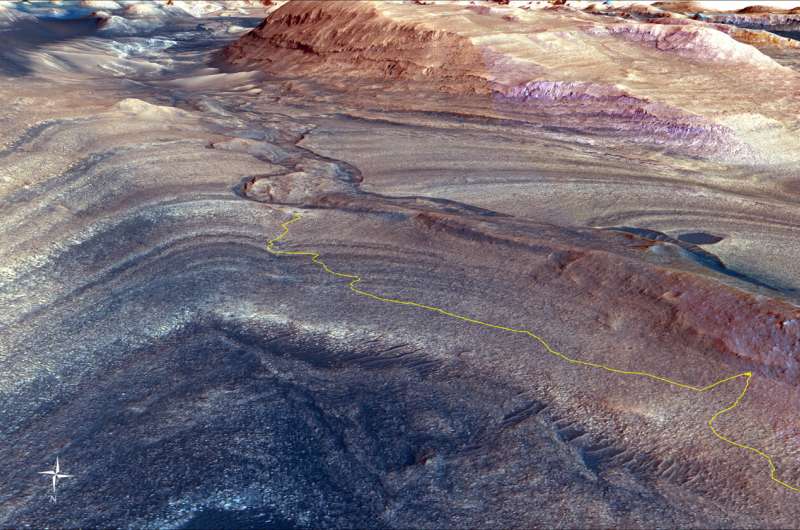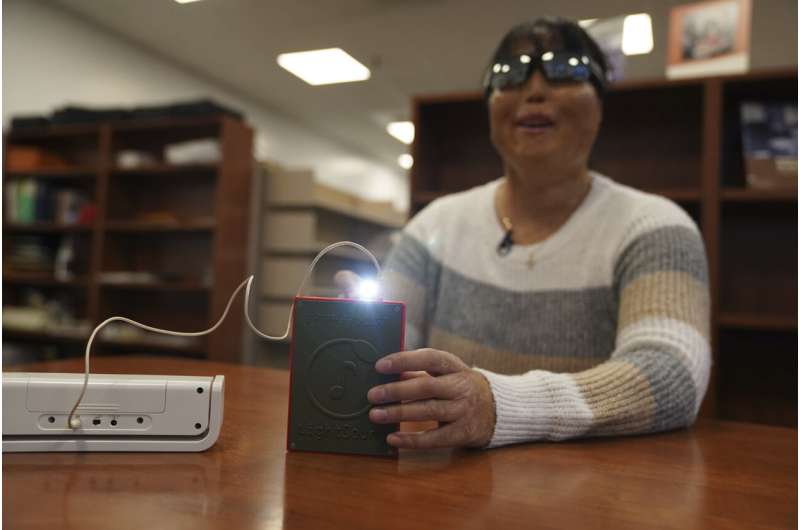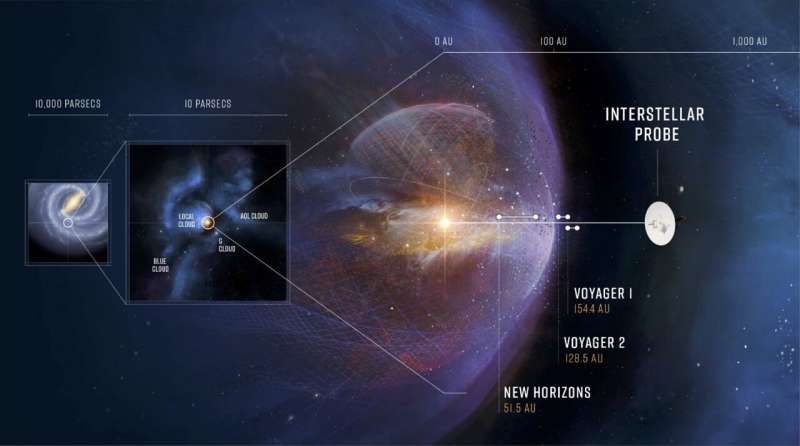Curiosity rover searches for new clues about Mars' ancient water
Saturday, 30 March 2024 09:29
NASA's Curiosity rover has begun exploring a new region of Mars, one that could reveal more about when liquid water disappeared once and for all from the Red Planet's surface.
Canada's Niagara region declares a state of emergency to prepare for an influx of eclipse viewers
Saturday, 30 March 2024 09:21
Ontario's Niagara Region has declared a state of emergency as it prepares to welcome up to a million visitors for the solar eclipse in early April.
Technical setback delays launch of final Delta IV Heavy
Friday, 29 March 2024 21:03 Launch of the final Delta IV Heavy has been delayed until further notice. An issue with a liquid pump in the gaseous nitrogen pipeline, crucial for providing pneumatic pressure to the launch vehicle's systems, led to the postponement.
The anomaly prompted a meticulous troubleshooting process by the United Launch Alliance (ULA) team. Work to diagnose and rectify the issue is underway to ens
Launch of the final Delta IV Heavy has been delayed until further notice. An issue with a liquid pump in the gaseous nitrogen pipeline, crucial for providing pneumatic pressure to the launch vehicle's systems, led to the postponement.
The anomaly prompted a meticulous troubleshooting process by the United Launch Alliance (ULA) team. Work to diagnose and rectify the issue is underway to ens SKY Perfect JSAT hunting for more early-stage space opportunities
Friday, 29 March 2024 20:17

Blind people can hear and feel April's total solar eclipse with new technology
Friday, 29 March 2024 16:37
Mapping the best route for a spacecraft traveling beyond the sun's sphere of influence
Friday, 29 March 2024 16:35
The heliosphere—made of solar wind, solar transients, and the interplanetary magnetic field—acts as our solar system's personal shield, protecting the planets from galactic cosmic rays. These extremely energetic particles accelerated outwards from events like supernovas and would cause a huge amount of damage if the heliosphere did not mostly absorb them.
Currently, the scientific community cannot reach a consensus on the boundaries or contours of this protected space, and they're exploring mission concepts for an interstellar probe that travels beyond the sun's sphere of influence to answer these questions.
Boeing’s satellite business zeroes in on military opportunities
Friday, 29 March 2024 13:39

Week in images: 25-29 March 2024
Friday, 29 March 2024 13:10
Week in images: 25-29 March 2024
Discover our week through the lens
Earth from Space: The Amazon plume
Friday, 29 March 2024 08:00 Image:
The Copernicus Sentinel-3 mission takes us over northern Brazil, where the Amazon River meets the Atlantic Ocean.
Image:
The Copernicus Sentinel-3 mission takes us over northern Brazil, where the Amazon River meets the Atlantic Ocean. Final Voyage Delayed: ULA Postpones Last Delta IV Heavy Launch with Classified NRO Payload
Friday, 29 March 2024 07:53 The United Launch Alliance (ULA) has announced a postponement in the final mission of the Delta IV Heavy rocket, now rescheduled for Friday afternoon. This delay comes as the rocket was prepared for its last journey from Cape Canaveral Space Force Base's Space Launch Complex-37. NROL-70 is conducted for the National Reconnaissance Office, carrying a classified payload, speculated to be an Electronic Signals Intelligence Satellite.
The United Launch Alliance (ULA) has announced a postponement in the final mission of the Delta IV Heavy rocket, now rescheduled for Friday afternoon. This delay comes as the rocket was prepared for its last journey from Cape Canaveral Space Force Base's Space Launch Complex-37. NROL-70 is conducted for the National Reconnaissance Office, carrying a classified payload, speculated to be an Electronic Signals Intelligence Satellite. Ariane 6's Maiden Voyage Marks a New Era for European Space Missions with YPSat Onboard
Thursday, 28 March 2024 20:55 Europe's newest rocket soon launches, taking with it many space missions each with a unique objective, destination and team at home, cheering them on. Whether launching new satellites to look back and study Earth, peer out to deep space or test important new technologies in orbit, Ariane 6's first flight will showcase the versatility and flexibility of this impressive, heavy-lift launcher.
Europe's newest rocket soon launches, taking with it many space missions each with a unique objective, destination and team at home, cheering them on. Whether launching new satellites to look back and study Earth, peer out to deep space or test important new technologies in orbit, Ariane 6's first flight will showcase the versatility and flexibility of this impressive, heavy-lift launcher. Astronomers Uncover the Legacy of a 12th Century Supernova with Multi-Telescope Observations
Thursday, 28 March 2024 20:55 In 1181, observers from different parts of the world were captivated by the appearance of a new 'star' in the constellation Cassiopeia, an event now identified as a rare supernova explosion. Visible for 185 days, this supernova shone with the brightness of Saturn, embedding itself in historical records.
The search for the remnants of this celestial phenomenon has puzzled astronomers for ce
In 1181, observers from different parts of the world were captivated by the appearance of a new 'star' in the constellation Cassiopeia, an event now identified as a rare supernova explosion. Visible for 185 days, this supernova shone with the brightness of Saturn, embedding itself in historical records.
The search for the remnants of this celestial phenomenon has puzzled astronomers for ce 





